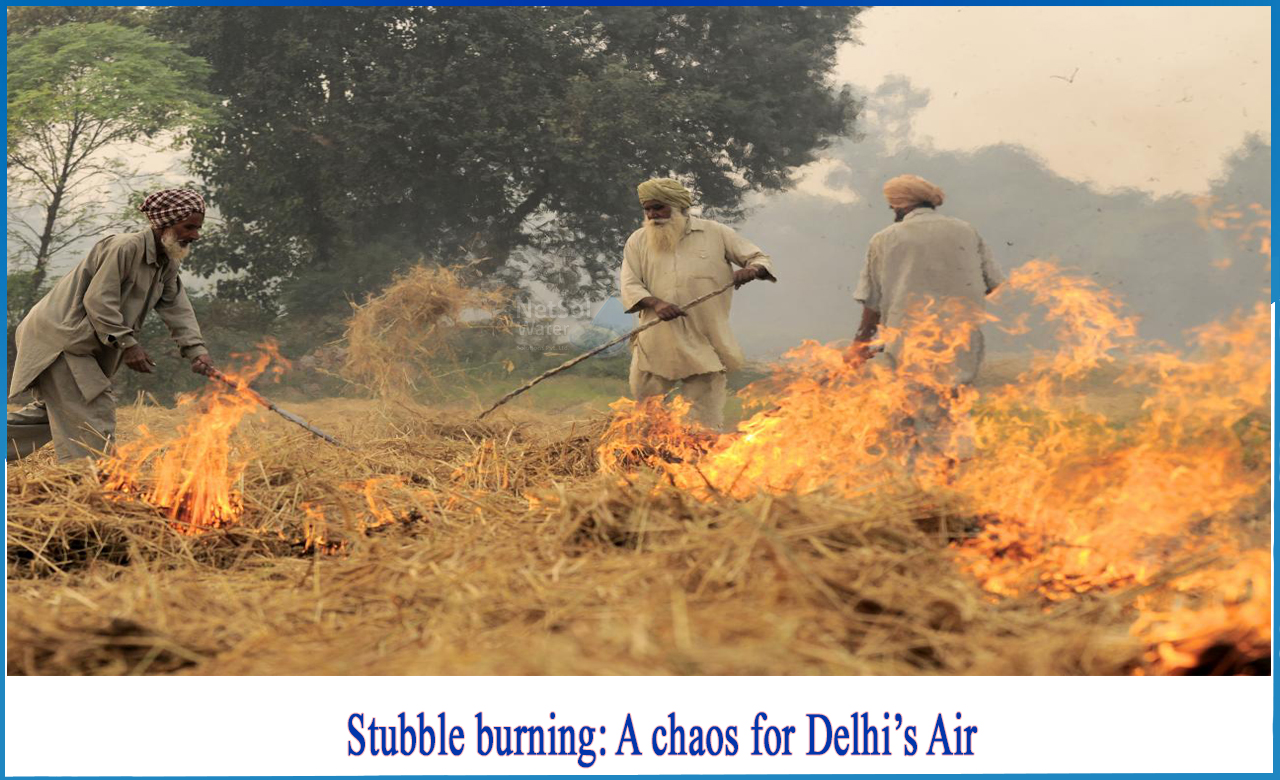Burning crop residues is known in the Western parts of Punjab, Haryana, and Uttar Pradesh, but has recently become more common in other parts of the country. Burning wheat stubble is a relatively new topic that began with mechanical harvesting by combine harvesters. Over the last four to five years, farmers in the UP district of Gazipur, especially in the Zamania and Chandauli regions, have burned wheat stubble on a large scale.
On December 10, 2015, the National Green Court (NGT) banned the burning of crop residues inRajasthan, Uttar Pradesh, Haryana, and Punjab. Burning crop residues is a crime under the IPC Section 188 and the Air Pollution Control Act of 1981.
The Supreme Court of Delhi also ruled to ban the burning of residues, and the Punjab state government fined crop residues burning 73.2 rupees in 2016. The actual amount of fines imposed was not available, but farmers continue to burn debris seasonally-this makes both soil and air toxic. In addition to wheat and rice, sugar cane leaves are most commonly burned. According to official reports, more than 500 million tons of parali (crop residues) are produced annually in the country, and grains (rice, wheat, corn, millet) make up 70% of the total crop residues.
Of these, 34% come from rice and 22% from wheat, most of which is burned on farms. It is estimated that 20 million tonnes of stubble are produced annually in Punjab alone, 80% of which is incinerated.
Instead of burning stubble, it can be used? in a variety of ways, including feed, compost, country roofs, biomass energy, mushroom cultivation, packaging materials, fuel, paper, bioethanol, industrial production, and more.
What is the Environmental and Health Risks of Stubble burning?
-In one study, burning crop residues resulted in 149.24 million tonnes of carbon dioxide (CO2), over 9 million tonnes of carbon monoxide (CO), and 0.25 million tonnes of sulphur oxides ( SOX), estimated at 1.28 million tons of Fine dust and 700,000 tons of soot. They contribute directly to environmental pollution and are also responsible for the haze of Delhi and the melting of the Himalayan glaciers.
-The heat from the burning rice straw penetrates the ground 1 centimetre and raises the temperature from 33.8 degrees Celsius to 42.2 degrees Celsius. It kills a population of bacteria and fungi that are important for fertile soil.
-Burning of crop residues damages other microorganisms in the upper soil layer and their organic matter. With the loss of "friendly" pests, the anger of "hostile" pests has increased, and as a result, plants have become more susceptible to disease. The solubility of the upper soil layer has also decreased. Burning 1 tonne of stubble loses 5.5 kilograms of nitrogen, 2.3 kilograms of phosphorus, 25 kilograms of potassium, and more than 1 kilogram of sulphur. According to one report, all soil nutrients except organic carbon are lost.
-A 2016 study by Bathinda's professor of medicine, Vitull K Gupta, found that 84.5% of people suffered from health problems due to elevated smog levels. It was found that 76.8% reported eye irritation, 44.8% reported nasal irritation, and 45.5% reported throat irritation. Cough, or an increase in cough, was reported by 41.6% of subjects and 18.0% by wheezing. Another study by the Bangalore Institute for Socio-Economic Change estimates that people in the Punjab region spend rupees 7.6 billion annually in treating illnesses caused by stubble.
Solution to the Burning Problem
In 2014, the federal government published national guidelines for the management of plant residues. Since then, crop residue management has helped to make the soil more fertile, resulting in savings of 2,000 rupees/ha for farmers' fertilization costs.
Farmers can also effectively manage crop residues using agricultural machinery such as:
-Happy Seeder (used to plant crops on standing stubble)
-Rotator (to plough the soil and allow the stubble to penetrate the soil)
-No-till Seeder (plough, used for direct sowing of seeds to stubble of previous crops)
-Baler (to collect straw and make bales from rice stubble)
-Paddy Straw Chopper (cuts paddy stubble to facilitate mixing with soil)
-Reaper Binder (for harvesting rice stubble and bundling)
On the other hand, these machines are too expensive, and the state government needs to provide better subsidies so that farmers can buy these machines.
Netsol Water is Greater Noida-based leading water & wastewater treatment plant manufacturer. We are industry's most demanding company based on client review and work quality. We are known as best commercial RO plant manufacturers, industrial RO plant manufacturer, sewage treatment plant manufacturer, Water Softener Plant Manufacturers and effluent treatment plant manufacturers. Apart from this 24x7 customer support is our USP. Call on +91-9650608473, or write us at enquiry@netsolwater.com for any support, inquiry or product-purchase related query.



